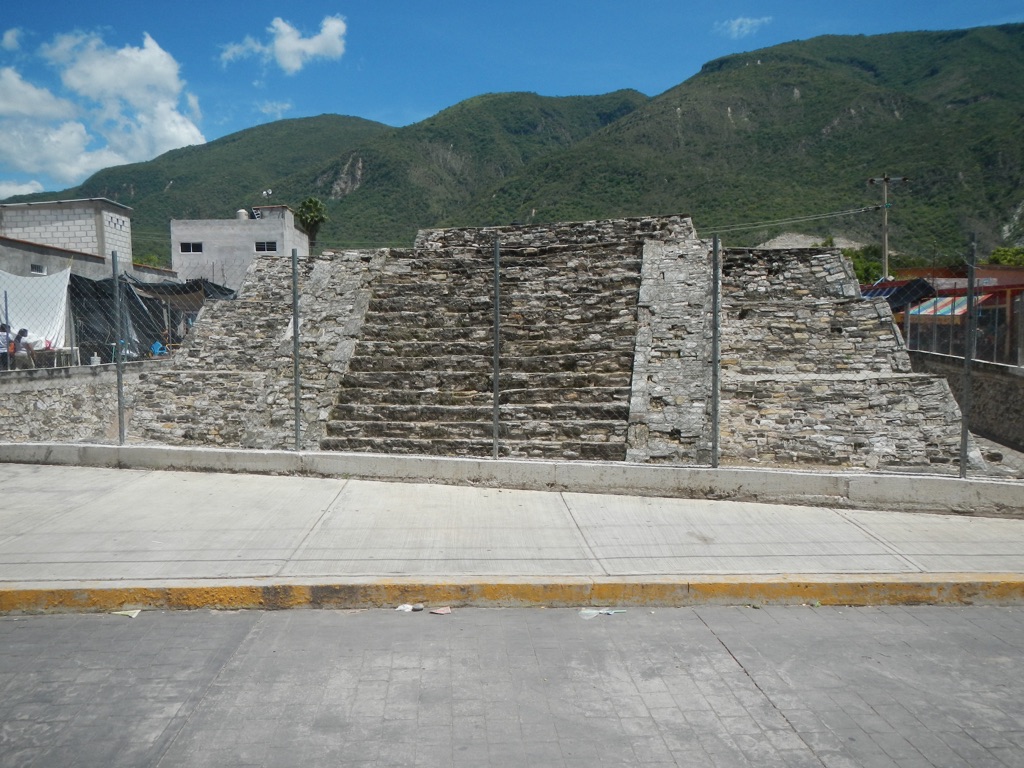The Huamuxtitlán Pyramid is an ancient Mesoamerican pyramid located in the town of Huamuxtitlán, in the Mexican state of Guerrero. This archaeological site, though not as widely known as some of its counterparts, offers valuable insights into the region’s pre-Columbian history. The pyramid itself is a testament to the complex societies that once thrived in this area, showcasing the architectural prowess and cultural practices of its builders.
Get your dose of History via Email
Historical Background of Huamuxtitlán Pyramid
Archaeologists discovered the Huamuxtitlán Pyramid in the 20th century. However, the exact date and the individuals responsible for its discovery remain unclear. The pyramid was built by the ancient Mesoamerican people who inhabited the region. Over time, it has seen various groups come and go, each leaving their mark on the site. The pyramid’s strategic location suggests it may have played a significant role in regional power dynamics.
The builders of the Huamuxtitlán Pyramid were part of a complex society with advanced knowledge of architecture and urban planning. These societies flourished in the pre-Columbian era, leaving behind monumental structures like this pyramid. The construction techniques reflect a deep understanding of their environment and available resources.
After its initial period of use, the pyramid may have been inhabited or repurposed by later cultures. This was a common practice among Mesoamerican societies, where new rulers often built upon the legacies of their predecessors. The site’s history includes periods of both prosperity and decline, influenced by the broader historical context of Mesoamerica.
While not the scene of any famous historical events known to mainstream history, the Huamuxtitlán Pyramid is nonetheless an important piece of the region’s cultural heritage. It provides a window into the daily lives and spiritual practices of the people who built it. The pyramid’s design and orientation may also hold astronomical significance, as is the case with many Mesoamerican pyramids.
The Huamuxtitlán Pyramid’s significance extends beyond its immediate region. It contributes to our understanding of Mesoamerican pyramids as a whole. The site’s ongoing study offers potential insights into the social, political, and religious aspects of the cultures that once thrived in Guerrero.
About Huamuxtitlán Pyramid
The Huamuxtitlán Pyramid is a structure of considerable size, reflecting the architectural capabilities of its builders. The pyramid’s base is a testament to the precision and planning that went into its construction. The use of local materials is evident in the pyramid’s composition, which has withstood the test of time.
Architectural highlights of the pyramid include its stairways and terraces, which suggest a step-pyramid design. This style is characteristic of many Mesoamerican pyramids, which often served as platforms for temples or altars at their summits. The pyramid’s design may have been influenced by astronomical or cosmological beliefs.
The construction methods of the Huamuxtitlán Pyramid likely involved a combination of manual labor and simple machines. The builders would have used tools made from stone and other natural materials. The precise alignment and cut of the stones indicate a high level of craftsmanship.
Over the centuries, the pyramid has experienced natural erosion and human-induced changes. Despite this, the core structure remains intact, allowing for archaeological study and conservation efforts. The site’s preservation is crucial for maintaining its historical and cultural significance.
Today, the Huamuxtitlán Pyramid stands as a monument to the ingenuity of its creators. It continues to draw the interest of archaeologists and visitors alike, who are captivated by its history and design. The pyramid is an enduring symbol of the region’s pre-Columbian past.
Theories and Interpretations
Several theories exist about the Huamuxtitlán Pyramid’s purpose and significance. Some suggest it was a ceremonial center, used for religious rituals and community gatherings. Others propose it may have served as a marker for astronomical events, aligning with celestial bodies at specific times of the year.
The mysteries surrounding the pyramid include the identity of its builders and the reasons for its eventual abandonment. While the pyramid’s design offers clues, definitive answers remain elusive. Archaeologists continue to match the site’s features with historical records from the region to piece together its story.
Dating the Huamuxtitlán Pyramid has been a challenge. However, methods such as radiocarbon dating and stratigraphy have provided estimates for its age. These scientific techniques help establish a timeline for the pyramid’s construction and use.
Interpretations of the pyramid’s carvings and relics have led to a better understanding of the site’s cultural significance. These artifacts offer a glimpse into the beliefs and practices of the people who built the pyramid. They also help to contextualize the site within the broader Mesoamerican world.
As research continues, the Huamuxtitlán Pyramid may reveal more of its secrets. Each discovery contributes to the ongoing narrative of this enigmatic structure. The site remains an important focus for scholars interested in pre-Columbian Mesoamerica.
At a glance
Country: Mexico
Civilization: Ancient Mesoamerican
Age: Exact age unknown, pre-Columbian era

